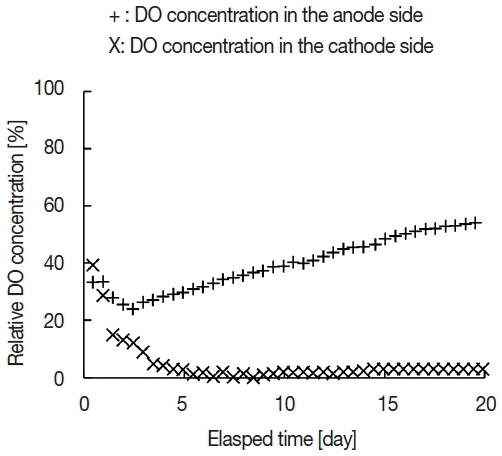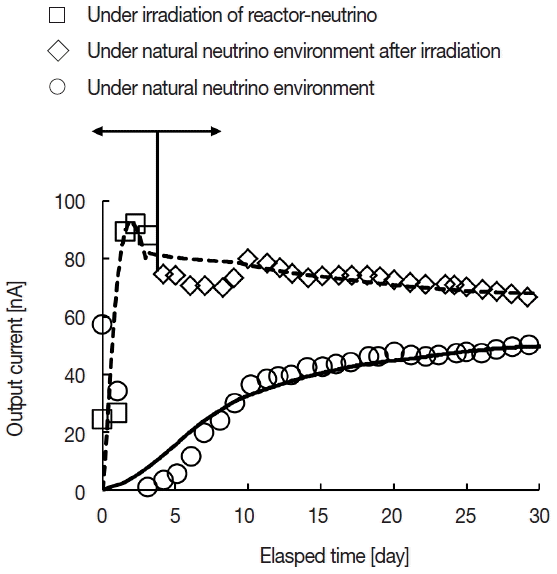Introduction
Neutrinos are neutral particles which have extremely small interaction cross-sections, for instance, of the order of 10−44 cm2 (E·MeV−1) [1]. In the quantum field theory, electromagnetic interaction potential Aμ is generated by Vector (V) type interaction current as ψ̄γμψ, where μ is one of space-time directions (t, x, y, z), ψ is a wave function of particle and γμ is a V-type gamma matrix. The V-type current propagates through a propagator with massless boson(photon) and generates the potential in the μ direction. In contrast, interactions of neutrinos are explained by the standard model [2–4] by using Vector-Axial Vector (V-AV) type interaction to explain the spin direction(helicity), where quite massive gauge bosons are introduced into propagator through the spontaneous symmetry breaking. The interaction current is ψ̄γμ (1-γ5)ψ= ψ̄γμψ–ψ̄γμγ5ψ, and the latter term with γ5 expresses AV-type current. The V-AV type current forms V-AV type potential. It is noted that the weak charge has completely the same value as the electric charge e in the electromagnetic interaction.
Our group previously carried out the experiments with small electrochemical apparatus containing biological materials for detecting low-energy neutrinos under irradiation of reactor neutrinos and under natural neutrino environment [5]. The experimental result indicated that the output current of reactor-neutrino irradiated one was appreciably larger than that of the other. Since the interaction cross-sections of neutrinos are quite small, so that the experimental result is inexplainable by the usual weak interaction. There may exist strange phenomena for very low-energy neutrinos under a certain condition.
To understand the experimental data, we proposed an electrochemical model with assistance of certain weak interaction. It comes from simple assumptions on the weak neutral field B0 and normal electrochemical current generation process. Oxygen behavior in the detector is considered to play an important role in the output current generation. However, we have measured the dissolved oxygen concentration at single location in the detector solution so far, and applied the result as spatially uniform distribution for the output current analysis [6]. In this study, we attempt to measure the dissolved oxygen concentration at different location, and make clear the current generation process with a half-cell analysis model [6].
Assumptions on Weak Interaction
The previous experiment [5] of our group is explained briefly. The results are shown in Figure 1. This indicates that the output current in the upper part (reactor-neutrino irradiation) is clearly larger than that of the lower (natural neutrino environment). The difference suggests that low-energy neutrino effect appears under a special condition.
Qualitative assumptions were made for the weak interaction to explain the experimental data. (1) A neutrino is composed of two types of internal constituent particles of weak charge type νc and weak dipole moment one νd. Both νc and νd generate the neutral filed B0≈-∂μAμ, but the fields basically cancel out in the region outside the neutrino. (2) Each constituent particle has motions of V- and AV-types, which serve as time-like and spatial-like movements, respectively. Quantities such as S matrix (for example [7]) for interaction cross-sections may be defined by eigenvalue of V- and AV-matrices. The contribution to S matrix form V motion basically offsets that from AV, leading to the quite small interaction cross-section. This may be expressed by the function of massive bosons in the weak interaction.
The biological products such as raw silk may accumulate a large amount of charge-type neutrino fragments (νc) therein, and produce a considerable quantity of B0 in AV-type. The concentration of νc has not been measured so far. However, the experimental data suggest us that raw silk should accumulate a sufficient amount of neutrino fragments through interaction with quite low energy environmental neutrinos. The strong B0 causes imbalance of S matrix, and make the interaction cross-section large. The resultant interaction cross-section may be comparable to the electromagnetic interactions at maximum, since the magnitude of charge values is the same for the weak and electromagnetic interactions. The experimental results possibly suggest that biological products like raw silk may generate AV-type scalar field B0. The field is equivalent to Nakanishi-Lautrap field in the quantum theory of electromagnetic interaction [8].
Electrochemical Reactions for Output Current
The detection mechanism is considered to be based on the electrochemical reaction which is assisted by the weak interaction. A gold electrode (anode) and a carbon electrode (cathode) are set at a distance of 1 cm in purified water of 50 g in the detector. Biological product of raw silk in total amount of 1 g is placed around the anode. A picture of the detector and dissolved oxygen (DO) meter is shown in Figure 2. Schematic view of the detector is shown in Figure 3. A DO probe can be installed in either gold or carbon side at the time of oxygen concentration measurement. The incubator keeps the temperature constant at 27°C.
A neutrino of which cross-section is augmented under B0 may dissociate a water molecule as
The negative ions OH−νd may produce a reaction making use of energy difference of B0 between regions inside and outside the gold plate as
If B0 and νd do not take part in the reaction, the reduction reaction cannot occur because of its original endothermic nature. The positive ions H+νc make the exothermal reaction around the cathode as
The output current may be generated by the sequence of Equations 1–3. When Equation 2 makes progress with catalytic-like effect of B0 and νd, the reaction Equation 3 may work according to Butler-Volmer equation [8] in electrochemistry, being dependent on the temperature. Under the half-cell analysis model, the output current takes the form of
where CH+νc and CO2 are concentrations (mol/cc) of the reactants, nH and nO are reaction orders, E is an electrode potential, P is a velocity constant, α is a shift factor, and ΔG is an activation energy of Equation 3. The value ΔG is determined from experiments at different temperatures, by slope of the Arrhenius plot where the logarithmic current log I is plotted as a function of 1/T.
Measurement of Dissolved Oxygen Concentration
To know information on CO2, we measured dissolved oxygen (DO) concentration with a DO meter based on a diaphragm type galvanic cell method. The measurement location is shown in Figure 3. The DO meter was set in purified water region in either the anode and the cathode side for the purpose of making clear the concentration difference. The experimental data are shown in Figure 4. The DO concentration is expressed by relative value (%) against equilibrium DO concentration under atmospheric pressure air. The DO concentration near the anode was comparable to the previous experiment [9].
The DO concentration in the anode side increases to a value about 50%, whereas that in the cathode decreases to 1–3%. The former behavior is considered to reflect the production of oxygen in Equation 2. The latter one may correspond to consumption thereof. The production and consumption of oxygen lead to difference in the concentration. The DO concentration difference shows therefore time dependence according to the amount of conducted electrons. Oxygen diffusion is expected to take place from the anode to the cathode corresponding to the electron flow in the closed circuit outside the container in Figure 2.
Electrochemical Simulation
For analyzing the detector output, we took the measured concentrations of oxygen molecules into account, and simulated the detector output using quantities of P,α,nH,nO in Equation 4 as adjustable parameters. The values are summarized in Table 1. These results are shown in Figure 5 by a solid line for the data under natural neutrino environment. The time evolution of experimental data was mostly reproduced in the simulation. The dashed line in the same figure was calculated by assuming a certain low-energy neutrino flux under irradiation of reactor neutrinos for three days. In this estimation, we set the flux of low-energy neutrinos under irradiation as thirty times as high as that in the environment. In addition, we set DO concentration of irradiated one by one third in the environment current for fitting. The higher output current may bring about the more consumption rate of oxygen. The output current decreases from the third to tenth day. This might be caused by the effect of vibrating motion of the detector during transportation from the experimental site to our laboratory. The convergence of the output current may be caused to reach an electrochemical equilibrium state.
Conclusion
Experiments were carried out to measure dissolved oxygen (DO) concentration at location in the anode and cathode sides of the detector. It was confirmed that DO concentration increases in the anode side while decreasing in the cathode one. This imbalance indicates diffusion of oxygen molecule from the anode to the cathode corresponding to electric current flow through conductive wires. We mostly explained the variation of experimental data by using the electrochemical half-cell analysis model based on the DO concentration that is consistent to the experiment.










